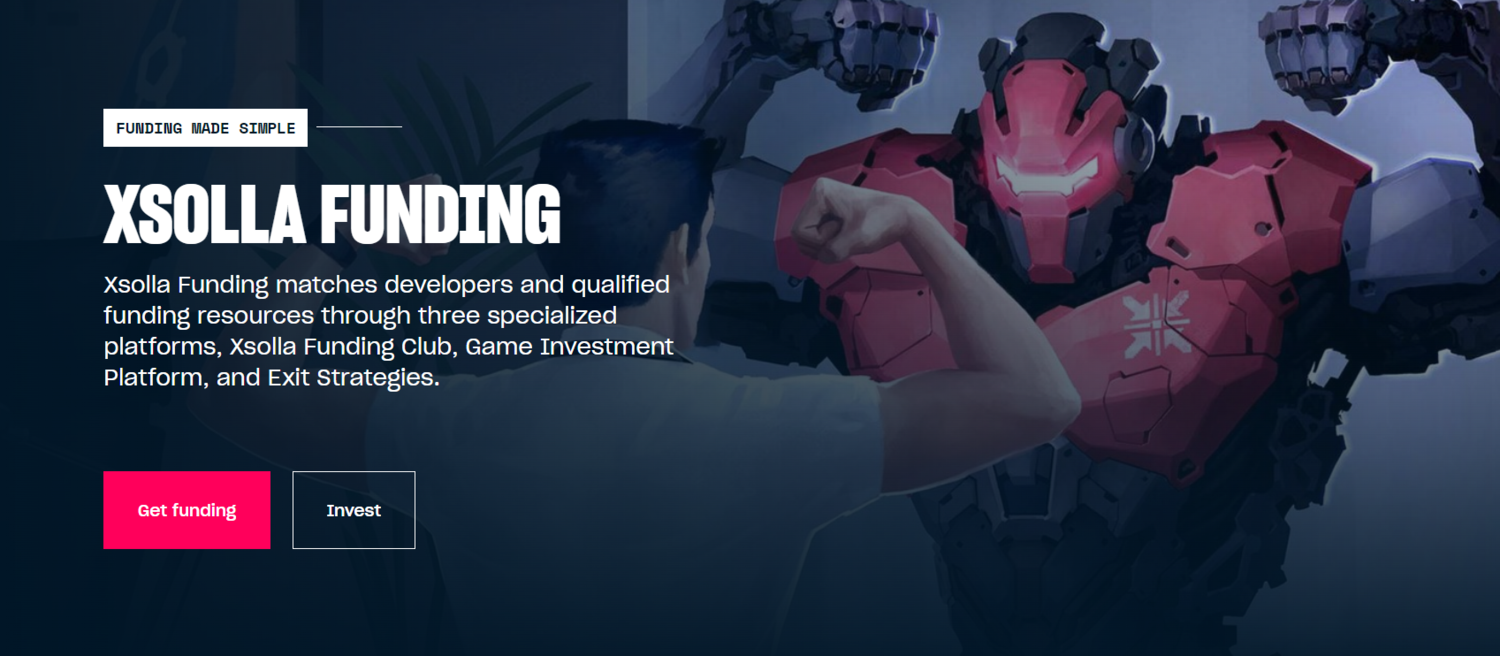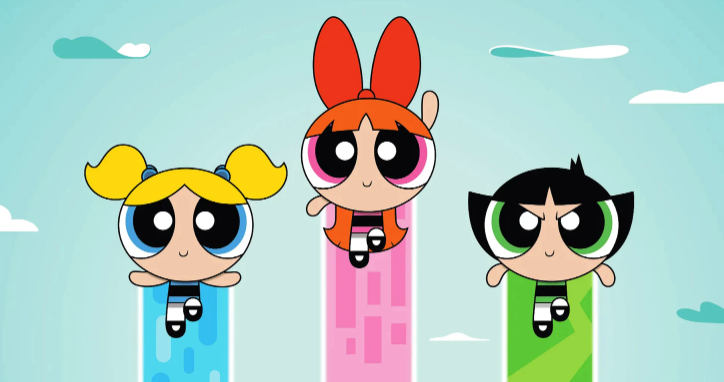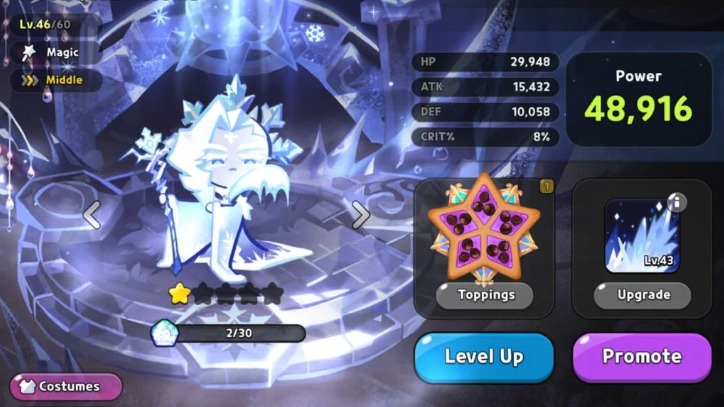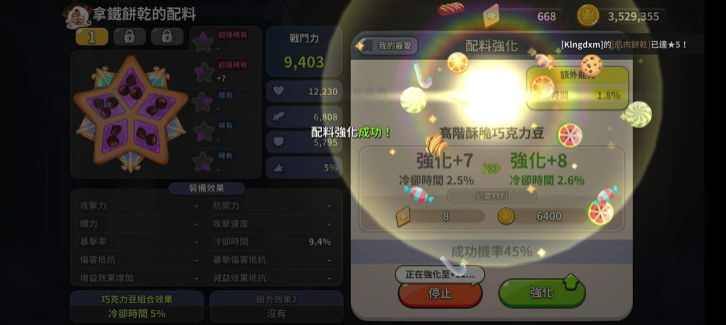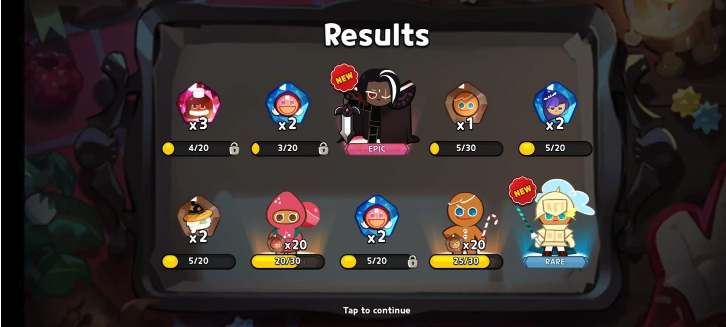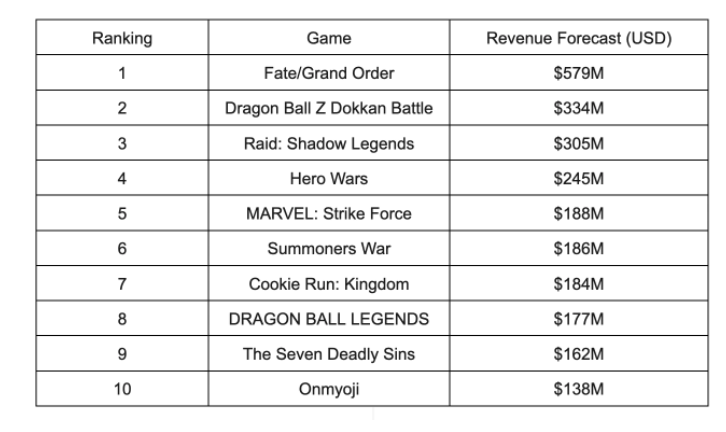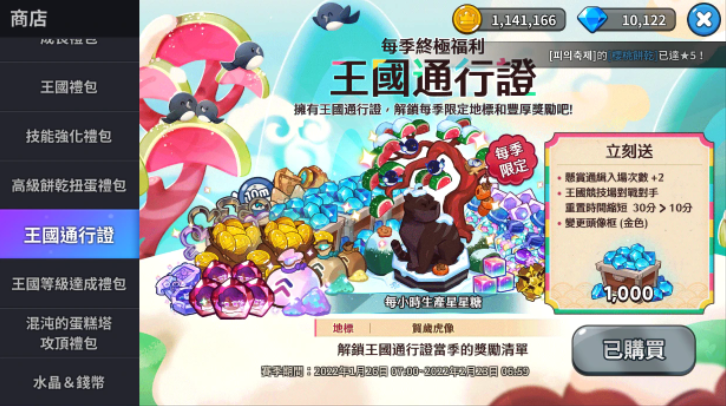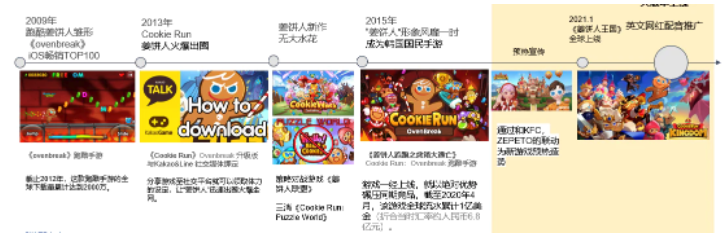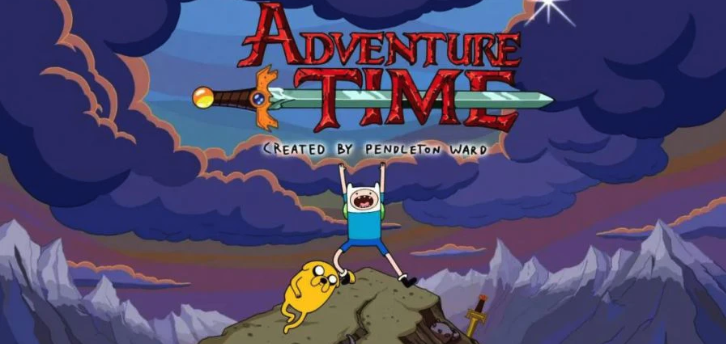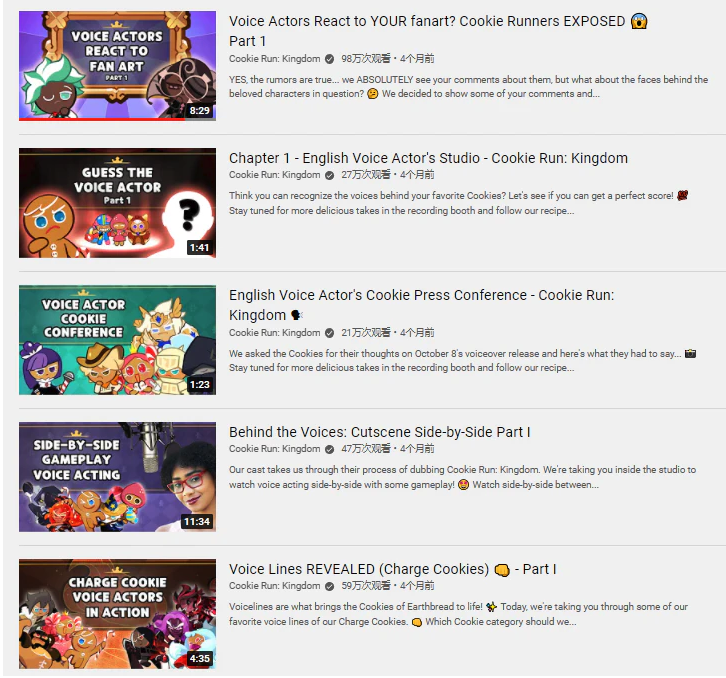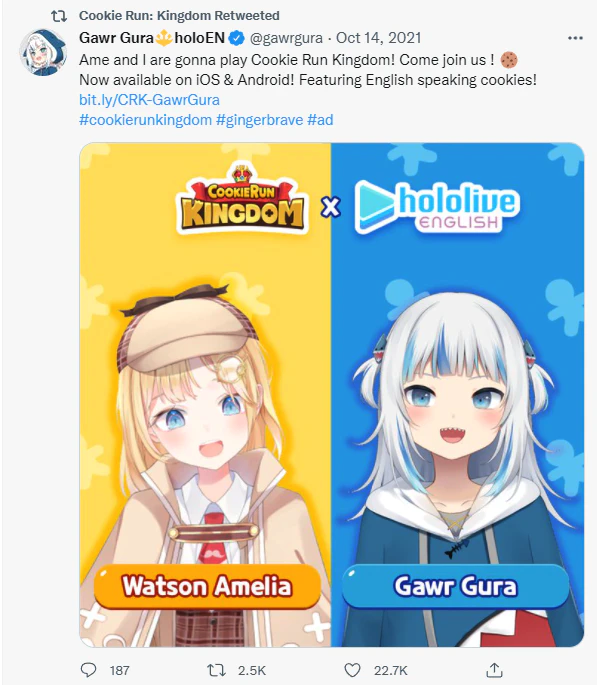How Cookie Run Bakes its Monster Revenue
This post is written by the fantastic Game Bakery substack team of Chase, Zixuan, Haiyin, Caitou, Fish, Amy, Chow, Jing, Wanzi and edited by Caitou, Rob. Sign up for their newsletter to be informed when the latest deconstruction drops.
From our sponsor:
Do you need funds to finish, release, or promote your game? If that’s the case, Xsolla Funding Club got you covered. It is the no-cost matching service that gets your game in front of qualified publishers and investors in one simple process.
1. Create an account
2. Submit your most up-to-date playable build, pitch deck, and gameplay video.
3. Your game gets screened internally by our industry experts within two weeks.
4. Approved games are placed in the Funding Club for consideration by qualified investors and publishers.
It's leading, it's simple, it's risk-free. Apply today!
Since launching in early 2021, Cookie Run: Kingdom has amassed quarter of a Billion in revenue with only 22 million downloads. We normally don’t spend too much time analyzing Asian hit games as what works in their domestic markets doesn’t traditionally transfer to the Western markets. Yet Cookie Run is different. Only 50% of all revenue has come from South Korea and the game has gained meaningful traction in the Western key markets.
$225M with only 22M installs is impressive to say the least.
We usually don’t analyze games that have over 70% if their revenue coming from Asian markets. What works in those markets simply doesn’t tend to work with the Western players. Cookie Run is has some imporessive traction in the Western markets, which may potentially turn this game into a proper worldwide hit.
The card-battling RPG genre was one of the first in mobile games that enjoyed success at scale and popularity around the world. Over the past ten years, it has not stopped evolving and innovating, with top games beginning with Summoners War (OG), to the Dota Arena and Onmyoji in China, to RAID: Shadow Legends and Marvel Strike Force in the West. By embracing and encouraging gamers’ motivation to collect and to cultivate, the card battling genre has become a proven formula for mobile companies and studios to maximize their revenue.
In this episode of Gamecamole, we will investigate Cookie Run: Kingdom from the South Korean developer Devsister, a card battling RPG mobile game that became a cultural phenomenon in 2021. This game managed to break into the global top chart for card battling RPG monopolized by existing incumbents for years, which is no small feat for a new release. Additionally, the game is also the first card collection game to see success in both Asia and the West, breaking the dichotomy between the two markets and the stereotype that no card collection games can be successful in both. Cookie Run: Kingdom has seen explosive growth since its launch in the US market in September 2021 after the initial launch in South Korea, bringing in over $300M+ in annual revenue.
What was Cookie Run: Kingdom’s secret to success? Two key words - cuteness and mashup. The game won over millions of gamers with the adorable Cookie characters and a perfect mashup of RPG and Build & Harvest mechanics. In the next few chapters, we’ll visit these topics one by one.
Arts
The art of Cookie Run: Kingdom is core to the game’s global success. The adorable characters, detailed worldbuilding, and an animation style that is both refreshing and polished made it easy for players to immerse themselves in the world of Cookie Run and hard to leave. This chapter will investigate the art of Cookie Run: Kingdom, its origins, its characteristics, and its efforts to expand into new markets during globalization.
Art Style
To talk about the characteristics of this art style, we must start at its origin. Cookie Run: Kingdom used a typical 2D tweening animation, which emerged between the late 1990s & early 2000s in-step with the rise in popularity of Flash and other animation software. As an alternative to the traditional hand drawn keyframe animation, tween animation trades some reduction in visual effects for significantly lower production cost and technical barriers. This made it a great fit for cartoons with an adorable style and simple geometry exemplified in Western cartoon media with The Powerpuff Girls and My Little Pony.
As Tween Animation became popular in the US and Canada, South Korea also became a major hub for Flash animations, responsible for well-known IPs like Mashimaro and Pucca. Therefore, games like Cookie Run: Kingdom were able to tap into the abundant Tween Animation talent and resource pool within South Korea built from cartoon productions and outsourcing projects.
A first impression of Cookie Run: Kingdom’s visuals will reveal they are clearly borrowed from My Little Pony. Both adopted a minimalistic style for their characters with smooth curves and geometries and mostly chose light colors with low saturation, making the visuals look delicate and sweet. The environments and architectures also preferred a cartoonish, hand-drawn look to more details and precisions. In comparison, Cookie Run: Kingdom is more similar to My Little Pony in terms of art style than the earlier Cookie Run platformer games, demonstrating Devsister evolved their art style to better fit the current preference of the global market.
Build & Harvest Mode in Cookie Run: Kingdom
Evolution of Cookie Run
Another thing to note is that My Little Pony and Powerpuff Girls have strong adult fan bases in the West deriving primarily from childhood nostalgia and the Meme culture. Therefore, Cookie Run: Kingdom’s similar but improved art style with a casual Build & Harvest and in-depth RPG gameplay makes it easier to win over adult players, which is supported by the user data.
Well-rounded World Building with Global Appeals
Cookie Run: Kingdom expanded the world behind the Cookie Run IP to a much larger universe, adding lore from ancient mythology, political machinations, & heroic adventures. Despite being a casual game, Cookie Run: Kingdom published a 200-page art collection with detailed backstories, characters, and designs, showing the developer’s ambition of building its own universe. The Cookie Run universe has incorporated major archetypes from pop culture - D&D, fantasy literature, wild west, age of discovery, etc. The themed worlds in the game were developed closely after these archetypes, with great attention to detail paid to corresponding architecture styles, natural environments, food, and many other aspects of the characters’ lives. Despite the thematic differences, the worlds are tied together around cookies and desserts, with building materials and natural resources such as Cinnamon Rolls (Logs) and Sugar (Rock), players as different forms of cookies, and villains mostly as cakes. Developing a detailed, polished universe like this presumably took a lot of time and effort from the team, but it pays off in the end as they continuously push out more content over time for player engagement. Cookie Run: Kingdom has successfully built an impressive, comprehensive artistic style and identity as a casual game- a rare combination.
Well Polished Animation
Even though Cookie Run: Kingdom is just a 2D game, Devsister has poured in more efforts than expected into the art production, first and foremost with the Cookie characters. Due to the limitation of the 2D models, showing a different angle of a character requires new art assets instead of a simple angle change in a 3D game. Because of that, Cookie Run: Kingdom created 3-4 different assets for each character:
Standing Pose
Gacha Pose
Cinematic/Campaign Pose
4 different angles of a top down view
It is hard to imagine the amount of work that went into creating corresponding animations for each type of asset. For a 2D game, animated cinematics can significantly help with storytelling in the main campaign. The game team has really leaned into this, adding in vivid, dramatic animations for battles depending on the situation (e.g. victory, failure, captured by players, etc). Due to strong fan reactions to the animations, the game even launched decorative items that certain cookies can interact with so that players can purchase and place in their kingdom to enjoy these interactive animations.
The animation and art assets in Cookie Run: Kingdom not only win in quantity but also in quality. The top down view creates the illusion of 3D with a slight see-through trick on the characters, making assets look more premium. Even in a chaotic battle, players can clearly see the moves and targets, making it easier for manual optimizations. These innovations show a higher level of art and visual effects than most other 2D casual games, which is enabled and driven by the ample 2D Tween Animation resources and talents in South Korea mentioned previously.
Successful Globalization
As a game with global ambitions, Cookie Run: Kingdom also launched a dedicated campaign into marketing the game overseas, attracting a lot of attention with its brand new animation, marketing assets, and a great cast for English voice acting. One example is the new 3D trailer developed by Devsister’s North American team which received tens of millions of views on YouTube. To appeal to a more mature audience in English speaking countries, this trailer used brand new 3D modeling and animation, focused more on adventure and heroism in the story, and added in elements related to drinking and bar hopping with a slogan like “Be a Real Tough Cookie.” Thanks to these localization efforts as well as Gingerbread (the protagonist) being a character that originated from Western traditions and fantasy, Cookie Run: Kingdom became a hit in the North America market. This shows that a global vision, an open mind, and a strong overseas team to delegate to and rely on can go a long way.
Narrative: Casual yet touching with wild imagination
The fun of Cookie Run not only lies in the in-depth world building and globalization, but also in its unique storytelling, innovating both in terms of the format and the content itself.
Cookie Run: Kingdom adopted a pretty interesting format by integrating text-based and experiential storytelling in a way that truly hooked the players. For the text-based campaign, the plot is broken into multiple bite-size pieces and sprinkled before and after the main chapters in the single player campaign, giving players the satisfaction of binging a TV series as they go further into the game. Each part of the story is long enough to keep the players hooked but never too long to lose their attention. They also tried to build out the cookie characters through player experiences interacting with them. Each cookie is given a unique outfit and architecture and lives their own life in the kingdom, occasionally walking around or showing pleasant emotes. There are also hidden easter eggs with interesting lines and detailed facial expressions if players click on or drag them around.
Special effect from clicking on and dragging the Hot Cocoa Cookie
If players place specific facilities in the kingdom, there are even more unique interactions these characters can have with them. As the builder of the kingdom, players have the god like power to write the story for their cookies as a part of designing and changing the layout of the the space.
Interactive Facilities for Some Cookies
Blackberry Cookie and Dark Night Mantelpiece. When the Blackberry Cookie sits on the chair to read, she will fall asleep and a ghost will come and knock the book on the floor, waking the Blackberry Cookie with the noise
In terms of content, the plot of Cookie Run: Kingdom advances very quickly while maintaining a grip on the details of the characters. If we simplify the plot, it is something like:
Gingerbrave woke up in the forest, found some strong enemies, beat them, found some friends, made some friends, discovered some treasure, and went on more treasure hunts.
The main plot is a pretty simple adventure story, but it is also broken down into smaller branches, providing players with new goals, achievements, and motivations to keep going at every step of the way.
Most importantly, the storytelling is centered around the characters, primarily in three ways:
First, each of the characters in Cookie Run: Kingdom is unique with their own personalities: Gingerbrave as a fearless Knight wannabe, Chili Pepper Cookie as a fierce vigilante, Custard Cookie III as a kid who wants to be a good king. The lines and voice acting for the characters vividly portray their personalities. Some characters have their own side quests as well that further showcase their quirks. The game also leverages the plot heavily in ongoing events to guide players through different stages of the game (e.g. the plot around Tower of Sweet Chaos inspired a lot of discussion on social media).
Side Quest with Rye Cookie and Chili Pepper Cookie: Romance of the vigilantes started by a wanted order
Second, the interactions between the characters in Cookie Run: Kingdom are hilarious to read. For example, Wizard Cookie and Custard Cookie III are modeled after Merlin and Arthur, following the trope of an idealistic, optimistic young king and a calm, sophisticated old wizard. Watching the dramatic daily interactions between them adds a lot of fun to the game. Most cookies also come in pairs and bring a lot of humor in their dynamics. The personality tropes of the cookies are common enough to remind players of other fictional characters they love or people they see in everyday life, which in turn helps players feel more connected to the characters.
Interactions between Custard Cookie III and Wizard Cookie
Lastly, even the villains are quite charismatic and likable, probably due to the small flaws that make them more relatable and seem less evil. For example, the Cake Hound looks very cute and only barks at you with limited damage, and the Licorice Cookie looks a bit challenged in its ability. These villains were all given their own backstories and past relationships as well, making it hard to dislike them.
Licorice Cookie’s Honest Self Awareness
As we wrap up our analysis on storytelling, we want to end with our observation that the most successful thing about Cookie Run: Kingdom is its postmodern storytelling structure. Many people say that Cookie Run: Kingdom chose a very smart setup - on one hand, it has a vast universe with long histories, legends, power struggles, supernatural forces, and the eternal fight between good and evil; on the other, cookies are the sweet dessert that we see every day and associate with holiday, celebration, and happiness. This contrast creates a unique sense of humor, especially when the Dark Enchantress Cookie said the following:
“Why do you think cookies exist? We melt when we touch water and break when we fall. How can we ever be happy when our life is so fragile?”
So, why do cookies exist? What is happiness for cookies? This line meant for setting up a main villain in the game also prompts from us a bit of soul searching.
UI/UX:Functionality Based with Quality
The beautiful yet functional UI design of Cookie Run: Kingdom was a major boost for the game
Aesthetics: Bright and cute cartoon style in line with the overall art style
Functionality: Greatly fulfilled the purpose of all UX designs, and despite some small flaws, provided smooth overall experience
High quality UX design matches well with the overall interface,with clear animations on what is happening in the Build & Harvest space that aids player understanding. There are a lot of notable designs in the details and here are some examples:
Seems simple but with great details: “zzz” means the factory has no ongoing tasks; green arrow means the factory could be upgraded. If the production boxes are all full when players click on Produce, it will show the text in the middle as well as a notification to add one box for 300 diamonds. Higher level factories that can produce multiple types of items are also distinguished from basic factories by hiding the uniformed resource bar on top.
When acquiring resources not available on the top of the screen, the top will show that resource and its current quantity with an animation of the rewards flying toward that location.
When clicking on items for trade at the trading post, players can see the current quantity they own and the channel to acquire more directly
One of very few imperfections is the UI design seems a bit too cluttered within a tight space, which causes some small problems.
Fitting everything into a tight space does improve the efficiency and reduces the amount of switching users need to do between menus, but makes it too cluttered overall. Some interfaces have too much information on the same screen, making it hard for players to focus their attention due to being overwhelmed. Small buttons make it easier to misclick and small fonts also reduce readability. Using the ingredients interface as an example, the red x button is sometimes blocked by the chat section, creating difficulty in the user experience.
The layout is too cluttered with the x button too close the menu blocked by the chat section. It’s also hard to see the ingredient level on the right
Of course, Cookie Run: Kingdom’s charm with the players is the result of many delicate design decisions after multiple iterations and polishes. From the integration of the card battling and Build & Harvest mechanics, to the strong character and world building, to the consistently smooth UI and UX, they all served the same purpose; how do we establish a fantasy world for people to shortly escape from their busy life, for once or for many more times?
As a mobile game, how did Cookie Run: Kingdom accomplish this through its gameplay mechanics?
Gameplay
By integrating gameplay from card-battling RPG and Build & Harvest, Cookie Run: Kingdom successfully attracted both the casual and the core players.
Gameplay: Genre Mashup leads to 1+1>2
The gameplay structure of Cookie Run: Kingdom incorporated both card-battling RPG and casual Build & Harvest while integrating the two by tying the XP bar, the level-up system, the ingredient collection, and the attack bonus from architectures altogether. This makes the battling stats from the card-battling RPG portion of the game and the harvested goods from the Build & Harvest portion of the game interdependent on each other. Here’s a chart on the core loop:
Even though this is quite a complex chart, it is already a simplified version of the actual intuitive game loop. The rewards users receive from different parts of the Build & Harvest gameplay will eventually improve the build for the characters in the card battling RPG gameplay. Similarly, the rewards users receive from different battles in the RPG gameplay can also help with the Build & Harvest gameplay.
Despite the core gameplay being an integration of two classic types of mobile games, it does not feel out of place for the players. Quite the contrary, a dual-system provides more points of motivation, encouraging users to alternate between two different kinds of gameplays to avoid fatigue. When players are stuck on Gameplay A, they can turn to Gameplay B to collect more rewards that will help push Gameplay A forward; when players are bored of Gameplay A, they can also switch to Gameplay B for something fresh.
Depth: Winning Over both Casual and Core
Another interesting result of this dual-gameplay system is that both the casual and the core players can find what they are looking for in the game.
For casual players, the game offers a large amount of interrelated architecture for producing different items as well as beautiful decorative pieces, so they tend to play it purely as a well polished cute Build & Harvest game whenever they lose interest or are feeling stuck at the card battling RPG gameplay. They have a core loop only focused on the Build & Harvest side that is still fun and replayable: collecting different produce such as whipped cream and strawberry, making them into cakes and strawberry jams to sell for profit, using the profit to purchase cute decorative buildings, and upgrading the kingdom to unlock more architecture. These players enjoy building their own Cookie Run kingdom and occasionally receiving new cookie characters as rewards. As a result, the game has a big following within the casual gamer.
For players who are more core or strategic, the game offers enough depth for them as well. Characters are divided into 8 categories from front (charge, defense), middle, to rear (support, ambush, magic, bomber, ranged, and healing). Players can use 5 cookies max in each battle, with three formations of 122, 212, and 221. Other than these limits, players can freely build their own team for the battles. The majority of the 65 characters in the game (especially the super rare ones) can be useful in PvE and PvP battles.
The game also offers many battle items called Toppings with 3 allowed per battle, and players will need to choose the timing to release the Toppings. The diversity of winning strategies provided a lot of strategic depth to the gameplay, which makes the PvP battles more dependent on the players’ ability to build a good team and leverage their abilities if the two players are on similar spending level. Additionally, the limited RPG points for leveling up and finite amount of resources also force the players to make a decision on which characters to prioritize throughout the game.
Compared to similar games, Cookie Run: Kingdom might look cuter than a typical core game, but the strategy and leveling system are deep enough to satisfy the core players. These players would usually dig deep into the PvP tactics and improve their stats through the Build & Harvest gameplay, spending, or changing up their team in order to beat other players.
Overall, in terms of the core gameplay, Cookie Run: Kingdom did a great job at building on top of a classic IP and integrating two different kinds of gameplay to bring fun to different types of players. This paves the way for high player engagement and monetization, which naturally led to its success in monetization.
System
The system design of the game and the in-game stats balance demonstrate Devsisters’ high standards. The consistency in design logic and gameplay integrating multiple systems show players the wit and excellence in game design choices.
As a player: Journey of diversity and novelty
In terms of the player journey, the game-starting experience is rich and varied. Compared with the stereotype settings of similar games, Cookie Run Kingdom has a better grasp of the player experience. While allowing players to switch between the two main patterns of playing, the game also introduced fresh and interesting systems and features at the right time to keep players' interest at a high level. These are strong enough to build its great early-stage player retention records, and the generous gacha system is the icing on the cake.
Next, we would like to divide the game experience into three phases and analyze them respectively.
Honeymoon phase
When joining in a seasonal campaign with a player onboarding session, players can get a lot of rewards quickly and draw cards frequently. Depending on how much you spend and how active you are, this exciting period can last approximately 2-4 weeks from the beginning of the game.
Build phase
Next, in order to drive the payment conversion, the stats requirements increase quickly in both battle stats and simulations, which means it gets harder to obtain resources. During this relatively long period (we could split this period into another 2~3 phases to be more specific, but we are not covering this topic here), the experience of paying players will be better. The activeness of non-paying players will decline and some will quit playing due to the slow progression or repetitive routine experience in the game.
Master phase
With the continuous accumulation of battle and simulation stats, players will eventually reach the later stage of what we will call here as the “master phase”. At this time, players have been able to easily master the daily gameplay, and even get a little fatigued. Since the players invest much emotion, time (and money) in the game by this phrase, they will transfer from PvE and simulation game players to hardcore PvP or guild battle players. They will prefer goal-oriented features, looking for a more competitive or more rewarding game experience to keep the fun in collecting and developing the game characters.
Economic system: A step-by-step approach to guide you into the depths
To match with the gameplay, we can see two economic systems in the game as well: the character system and the simulation or development system of characters.
Low complexity for easy understanding
Cookie Run: Kingdom has a varied collection of coins and resources on the whole. The complexity of the game system impacts the players’ view on the easiness of the game. However, card/Team Battle RPG and simulation games are mature genres that players with some experience can easily master. And the well-designed resources in Cookie Run: Kingdom, with its clear UI/UX, make the game also very easy and friendly for newbies.
Nice game balance
For ease of development and support, stats expansion is commonly used in Team Battle RPG games and simulation games. Cookie Run: Kingdom is no exception. In addition to the fast increase of stats, most of the mathematical-algorithmic models in the game are relatively strict. Only a few balancing issues in some systems or features could be detected.
Clear Logic Flow in System Design (Meta Features)
Each individual system and feature in Cookie Run: Kingdom has a strong design purpose. The metrics and stats balancing in the game work well! The whole system is reasonable and transparent in general, and we barely see any ambiguity or tricky situation.
Players will easily find the game playable, smooth, and interactive. Let’s take the character development system as an example. In the beginning, players could upgrade “Cookies” via bounty missions. This way is capped three times a day, which is annoying. Interestingly, the game introduces you to the microtransaction system just when you get annoyed. This new system will refresh every 5 hours with a certain number of missions or tasks each time, allowing players to obtain “Skill Book” and get upgrades after completing the missions and tasks. Unlocking and upgrading the “Trading Port” in the game can lead you to more choices and options. All these are revealed timely to answer the players’ needs. What a nicely done “Just-in-Time”! The paying players were converted while the non-paying players stayed in the game long enough that all of them long for new excitement to continue. There are many similar examples you can find in the game.
The well-balanced and logical connections amongst systems provide a comfortable rhythm for players. There are always meaningful short-term goals to pursue; in long-term missions, players will not be held by a “paywall” and so getting frustrated & churning or feeling resentful about paying.
Gacha system: Roll a gacha, get a real thrill!
The gacha strategy adopted by Cookie Run: Kingdom is different from other gacha games.
Cookie Run: Kingdom has released 65 cookies with various attributes so far, of which 44 cookies are ranked epic or above. Only 21 cookies are marked rare or common, which means players have a higher possibility of obtaining a super rare cookie. Compared to other gacha games, this game will not cost players much to roll out 20-30 characters of great rarity. Non-paying players can also get new cookies through their efforts instead of purchasing gacha opportunities. Players can still unlock new cookies by coin exchanges (in Gacha Shop, PvP Shop, or trading port. etc.) or event rewards.
We find some interesting designs in Cookie Run: Kingdom’s Gacha system that are key to its success.
First, the rarity is nicely balanced with the drop rate which makes it friendly for all players. The game categorizes the cookies into four types based on rarity: common, rare, epic, ancient/legendary (ancient cookies and legendary cookies have the same drop rate but with a different type of tag, so we put them in one category). We have already seen how Genshin makes innovation in its character pool - having only high rarity characters and no so-called "normal" characters. To compromise, Genshin introduces many entry-level weapons. Cookie Run: Kingdom does not take a similar approach because the selling point of this game is the cute characters, the vivid plot setting, and the thriving scene of many cookies living in one kingdom. Considering the above, Devsisters may never think of following Genshin’s character design strategy.
The friendly drop rate brings players great excitement from both getting an Epic Cookies and a x20 combo!
Second, the Gacha experience is appealing. On the one hand, compared to the traditional pyramid model (the rarer the character the harder it to obtain), Cookie Run: Kingdom set up a relatively more player-friendly drop rate. The rate to get an Epic cookie is high (19.305% - generally other games will set such a rate under 10%) and this is how the majority of players build up their core combat team. On the other hand, the game also designs a “Combo Drop“ with 20 puzzle pieces (You roll a new cookie out and you get 1 to 3 pieces of the whole cookie. There is an estimated 20% probability of getting 20 pieces, meaning, unlocking a new cookie in one-go). You can easily imagine the excitement of suddenly getting a new character in the midst of completing tedious tasks. On top of that, the game keeps a guaranteed mechanism to protect the experience of “unlucky” players. Such a complex Gacha system design is innovative. It combines the traditional RPG Gacha and guarantee mechanism, but also matches the generosity goal of the game.Below we provide several RPG games for comparison. (Actual player experience will be affected by the overall design of the economic system, but you can still see how friendly this game is in terms of drop rates. Also note a comprehensive guaranteed rate for the presented Genshin data).
RPG Games Drop Rate Comparison
If it were so easy to get an ideal roll, why do players still pay for the game? How does Cookie Run: Kingdom protect its economic KPI under a nice drop rate?
One obvious design is, the game uses only one resource to mark level-ups for both kingdom and characters (puzzle pieces), which protects the content depth in the card pool. So the correct question to ask should be: “How do you get players to willingly cultivate the cookies and not just be satisfied with having the cookies they want?” Then we come to another exquisite design of the gameplay system - character cultivation system. Developing characters in this game takes two directions, both combat upgrading and story plot cultivation. Players feel much more worthy to work hard in both ways and feel more motivation to develop their characters in the long run with their strong emotional attachment enhanced by the story and game art. Moreover, the game has an “illustration handbook” system that rewards players for their collecting behaviors, which further encourages players to keep developing their cookies in the middle and later stages. Therefore, Cookie Run: Kingdom drives players spending money and time on the game willingly. Players don’t need to throw a lot of money while cursing and playing the game just to chase one or two specific characters.
Level system: The long-standing contradiction in strategy and casual elements
The level system has 4 modules: upgrades (normal levels), stars, ingredients, and skills. Generally speaking, most stats have a steep ramp-up. Non-paying players may easily feel little progression in the middle phase (Build phase). In order to keep motivating such accounts, the gameplay encourages players to develop a strategic simulation approach to acquire and manage resources, supplemented by improving combat attributes which require money or time investment.
The ingredient module is, comparatively, simpler. There are no designated fields for the ingredients and only provide limited upgrades on the sub-attributes. Such design prevents players from getting tired in his/her resource collecting grinds and fits the market positioning of Cookie Run: Kingdom as a casual game. However, this design also limits the direction of character development if players want more freedom in customization. Considering the game doesn't have an alternative way to cultivate your characters in the simulation gameplay - as long as you keep collecting resources your cookies get level-ups.
You only need to unlock sub-attributes which have no upgrade option. All attribute combinations are limited so as to be more controllable for players.
Casual players certainly do not feel much need for deep customization, but the game update may not keep up with the progress of players over time. With the growing numbers of EOC (End of Content) players and their increasing emotional investment in the game, how to provide more immersive combat in the game will become an important requirement to the developer. So I think the game could introduce a combat system in which players can allocate different combat attributes to fighting characters in the future (similarly to skill tree or new skill tab designs in other games).
PvP arena system: Putting new wine into old bottles - but still tasting good!
PvP arena could easily be rendered an insignificant system for leech RPG players. But we can see a breakthrough in Cookie Run: Kingdom’s PvP arena design.
Why are we calling the PvP arena a “chicken-rib” (of little value or interest) system for RPG leechers? Mostly because the combat is automatic. The differences in character attributes decide who will win and players’ controls or strategies can never change the result. If you were a new player, you won’t have enough resources to invest in building more than one combat team for the PvP arena. You will know the result before the combat even starts. It’s simply a battle of mathematics, not a PvP battle. This also leads to the phenomenon that 90% of the defense players will deliberately set up a team with lower stats. When this “poorer” team gets defeated, the players can have a character with a higher rate for a successful “revenge” in the next battle. Obviously, these tricks are not in line with the original design intention.
Despite the inability to solve the design problem fundamentally, the game still introduces some small design features that make the PvP arena a more meaningful part of the meta-features:
The competitor list can be refreshed for free every 30 minutes. This, coupled with the fact that players normally have plenty of Battle Pass in the early stages, can effectively promote players to enter the game every 30 minutes. No one wants to let go of the precious refreshing opportunity, which in turn boosts the players’ activity level.
In the defensive team setting, each player can control 2/5 characters. Therefore, players can use more strategies in high-level arenas (hiding core combo) and put certain buffs in the low-level arena (masking characters with higher attributes + confusing opponents by showing cookies with lower levels). This design makes full use of player psychology and satisfies the gambling or lottery desires of many players. To a certain extent, this design not only increases the strategic elements of the defending side, but also breaks the situation where the attacking side measures its opponent simply by comparing the numerical attributes.
On the defending competitor page, players can challenge all opponents who have broken through their defenses in the past 7 days. This is an enrichment of gaming content for highly active and paying players as they interpret this as “I have made greater progress than others.” Moreover, the psychology of revenge corresponds to the persona of those who participate in the PvP arena. The design, again, matches users’ needs.
You only need to unlock sub-attributes which have no upgrade option. All attribute combinations are limited so as to be more controllable for players.
An opponent I battled with a few days ago, but I smashed him/her after one hard-working week.
Nevertheless, there is still room for optimization in the PvP arena system:
There is no cooldown period for level advancement, which leads to frequent pop-ups near the level-up threshold (especially just after a new season is launched). We suggest the developer add up an elo design to create a short buffer time for level-ups.
Improve the situation where there are no suitable opponents with similar attributes after refreshing the list. This can establish a positive feedback loop, preventing players from being disappointed and even stopping playing the PvP arena.
Tropical Soda Island: A permanent game mode beyond player expectation!
The gameplay is simple and easy to learn, but we can find some innovative elements in the core mode giving players an “aha moment” after understanding the system.
When I first tried Tropical Soda Island, I assumed it was an expansion map of the core Kingdom gameplay. Only after continuing for some time, I realized that the battle under Tropical Soda Island is using an "Accumulative Damage Mechanism.” That is, a player's battle progress in an island is saved at the checkpoint even if they lose, allowing them to resume using a special cookie and complete the Island (the level). Players can complete the level using a team with strengths far below recommendation, thus getting a stronger sense of achievement. The waiting time creates a buffer timer for the game when players go back to “build the kingdom”, echoing the core simulation elements in the game design.
In addition to the previously mentioned innovation of internal combat gameplay, Tropical Soda Island is organically integrated with other systems. Players can get resources to explore the island in the core trading port, which enhances the strategic part of the game and provides another way for players to collect more regular resources in the middle and late stages.
The drawback of this mode is the UI/UX is not reflected in the post-battle interface of the “Accumulative Damage”, leading to a certain learning process. (Only having a subtle display before the battle)
Accumulative Damage Mechanism
Cookie Run: Kingdom not only stands out for its interesting gameplay design. The game has also become a fine example in terms of strategies, monetization, and publishing.
Strategies: Tightly hold the IP fans and attract generic players with gameplay.
We look at two questions when analyzing the game’s product strategies:
1. “Why” did Devsisters develop Cookie Run: Kingdom?
2. “How” did Devsisters make Cookie Run: Kingdom such a great game?
Looking at the “why” question, Devsisters has been working on the Cookie Run IP for over 10 years. But why did they put this old and well-known IP in a new game genre (simulation x RPG team battle game)?
First, these two genres are highly compatible. Many game developers tried “X+Simulation” games. The Team Battle RPG game, similarly, is proven to be a strong genre for building IPs. From the rationality of the gameplay, the overlapping user habits of old players, or the acceptance of new players, the combination of simulation games and RPG games is very reasonable. We won’t go into details here on the gameplay- please refer to the middle section for specific analysis.
Second, such arrangements have great commercial potential. The two charts below show clearly that Endless Runner is a genre with poor downloads and revenue. On the contrary, Simulations have a huge player market and Card Team Battle (RPG) is at the top of the monetization. Developers choosing these two genres can cover a wide range of their product portfolios. Simulation features are responsible for user growth and early retention, while RPG features are responsible for mid to late-stage user retention and monetization goals. Not to mention both genres have proven to be a commercial success in Asia, Europe, and the US, further paving the way for the internationalization of this title.
Global Downloads - past 24 months (Runner, Simulation, Team Battle RPG)
Global Revenue - past 24 months (Endless Runner, Simulation, Team Battle RPG)
The success of Cookie Run: Kingdom is self-evident. In the U.S. region alone, the game ranked 16th in revenue and 1st in downloads (out of the top 100 revenue games) for RPGs in 2021.
Despite Cookie Run: Kingdom mixing Simulation and RPG almost equally, the game was categorized into the Team Battle RPG genre because its core gameplay and driving force still come from character development and combat. As we all know, in the whole RPG category, the status of several leading giants has been quite stable. Few newcomers have stepped onto the stage and gotten a voice despite the challenges they have been sending out. Cookie Run: Kingdom is one of the few new games to hit the bestseller list (the other is Puzzles and Survival from 37 Interactive Entertainment).
2021 Global Team Battle RPG - Mobile Games Revenue (excluding Android in China Region)
In recent years, Team Battle RPG games have become so homogenized that players are getting used to and even tired of the same old tricks. The future of this genre lies in how well it integrates with elements from other genres (including but not limited to Puzzles, Tower Defense, Simulations, etc.). Devsisters needed to thread a needle of perfect integration if they were to do well in the Card-RPG business.
Now Cookie Run: Kingdom stands out in the competitive RPG game pool. What other strengths could we study in its implementation?
We already mentioned the core loop of this game before. Here are a few more points to emphasize. As a whole, the two gameplay systems (Simulations x RPG) tend toward mutually promoting and restricting each other. Players get a smooth playing experience while balancing a rhythm that might seem boring if it were only Simulation or only RPG (e.g. a player can go back to his or her cookie kingdom to build houses or farm after intense battles). Its implementation stages are:
In the early stage, it won’t cost you much time to learn. The game creates a smooth experience with simple combat and interesting simulation gameplay.
In the middle stage, the learning cost increases steeply and gradually stimulates players' desire to pay.
In the later stage, the game is growing its metrics depth, introducing new characters and various events to further incentivize player payment.
When analyzing the target users and product positioning of this game, we asked ourselves: “Most card RPG games use characters that are beautiful, cute, pretty roles or fierce beasts, how can cookies attract so many players?" Is this game aimed at young children or teenagers? No.
There are two types of target players for this game: one is the generic card game/RPG players (typically female players, new users of this genre, etc.), and the other one is the experienced players who are tired of the same style of traditional team battle RPG games. In terms of the character settings, although the cookies’ images are not so graphically advanced, the developer has made great efforts to create cookies with rich characteristics, interesting backgrounds, and strong appeal. Cookie images do not challenge the players' perceptions, but apply commonly understood tropes (e.g. bartenders, priests, knights, etc.). Such designs can reduce the understanding difficulty of players on the one hand, and make it easier to complete the character’s impressions on the other. The worldview of the game is universal while blurring character comprehension gaps of different regions, culture, or gender. So it successfully meets the different tastes of players regardless if they are from Asia, Europe, or the United States. The game sells itself with an easy and lovely art style but successfully differentiates itself from other products of the same genre. It’s remarkable how they make collecting roles in a game become a desire for players instead of a disadvantage in the traditional RPG genre.
What's more, the above-mentioned gameplay and game art are not fragmented but deeply integrated. Simulation elements and combats lay a solid framework of this game, while the lovely art and character’s settings are firmly wrapped around this framework. Players will make rational game decisions in the core gameplay, but at the same time, they can always be emotionally attracted by the charm of different cookies and even willing to make payments. The rational and emotional sides complement each other well.
Monetization
We briefly talk about the event packs in the previous section, which is one small example of Cookie Run: Kingdom’s large monetization system.
Cookie Run: Kingdom has the additional gameplay around Simulations when compared to other Team Battle RPGs, so its monetization is centered on character development and kingdom running simulations. Along with the beautiful character designs, compelling storytelling and events, the combination of two game modes enable Cookie Run: Kingdom to take many interesting attempts in monetization. After an in-depth experience, I am very satisfied with the design of the store in-game. The only shortcoming is that the commercial design at the beginning of the game may have room for improvement.
The economic cycle of the game is shown below:
The store can be separated into several major sections:
Section 1: Limited packs for events, which are normally released during real-life holidays or festivals.
Section 2: Regular packages related to the core gameplay (Monthly Packs, Event Pass, rewards for character upgrade or kingdom upgrade, etc.);
Section 3: Basic game currencies like crystals and coins.
When I first entered the game store, I had limited knowledge of the game itself. I was dazzled and overwhelmed by a large number of event packs and rewards. This made me hesitant to spend money in the beginning, and I didn't know what I needed to buy to get a better starter experience. As a potential light-paying player, I would prefer to have a clear, condensed guide on how to spend money wisely in the beginning. The First Time User Experience design should not assume I know all the purposes and usages of all sections and packages overwhelming my screen.
Therefore, the commercial design can be optimized to give new players a more friendly initial store experience. Since new players are more focused on understanding the game, gift packs with higher discounts or packs related to the gameplay can be presented to such newbies in the beginner guide stage, and event-related gift packs can be presented in the later stages. In other words, before completing the beginner guide stage, only monthly packs, season passes, kingdom packs, and new cookies Gacha packs should be promoted to players. Save the festival or dedicated event packs for later! Condensing and focusing information can help players avoid analysis paralysis and make initial payment decisions faster.
Setting aside this drawback, Cookie Run: Kingdom has a brilliant monetization system.
First, the game rarely uses the pop-up window tactics common in other mobile games. Players only see in-game purchase pop-ups when a new role is unlocked or when the new role gets the first level upgraded. And after these two packs first appear, the game does not have repeated pop-ups (often offensive to players) to promote further purchase. Players can only find a reminder in the game store under the “Limited Sales” bar. Cookie Run: Kingdom is neither hard-selling nor overbearing via reminders. This approach is encouraging for players and the long-term retention data is strong proof - the game has a predicted thirty-day retention rate of about 14.6% in the US and about 21.36% in Korea. We can boldly say that the game successfully accommodates the differences between Eastern and Western cultures and player preferences. This is further proof of the game's success in aesthetics and gameplay design. If a game commercial team has confidence in conversion and retention, there is no need to repeatedly ask players to spend money in a short period. It is more effective to lure users with more compelling, new content offerings at a slower pace.
Second, the design of the Cookie Run: Kingdom store is very user-friendly. The store section layout is detailed enough, so players can quickly locate the ideal content for purchase when needed. For example, if players are short of resources in the kingdom building simulation mode, they can directly find the "Kingdom Gift Pack" section and buy corresponding gift packs. Whenever there is an event/festival, the corresponding event or festival packs will be placed at the top of the store page for easy access. Interestingly, the game will also "thoughtfully" increase the limit of max gift packs purchased near the end of the event/festival period. Players with additional willingness to pay will continue having a channel to pay.
For players of different spending tiers, the game also provides different combinations for similar resources to meet their respective needs.
Most importantly, Cookie Run: Kingdom rarely has packs that cost more than $35. Most packs are priced around $10 to $20, and there is a strict limit to the number of times each pack can be purchased. There are two possible reasons. First, more players will be tempted to pay impulsively for low-priced packs. $99 packs are too expensive for impulsive consumers, and $10 to $20 packs are the price most players can accept. Second, the content of the gift packs will be discounted, sold at a low price with limited purchases- this strategy is no different from putting out a long line to catch a big fish.
This satisfies the spending needs of paying players, ensuring that they can spend steadily over time, while effectively reducing the pay-to-win ratio. All players get to experience the game progress slowly, instead of having the high-paying players winning all the battles for a short term. Third-party data also shows that Cookie Run series global downloads reached over 28 million and a revenue of nearly $290 million in 2021. Among them, Cookie Run: Kingdom’s “lower than $10 packs” accounted for about 80% of the total revenue in Dec 2021 of the U.S. region (only iOS). This, again, proves the excellence of the game's monetization strategy.
Overall, thanks to the game's Simulation + Card RPG gameplay framework, this game has plenty of purchasing opportunities for players. The variety of resources drives large consumption, coupled with the cute art style and the appealing story plots, making many players willing to pay for this game consistently and passionately. Although the overwhelming packs displayed in the store at the beginning are seemingly too aggressive for new players, all other aspects of the monetization system are very worthy of study.
Publishing
The previous paragraph has exhaustively analyzed the success of Cookie Run: Kingdom in terms of product. The game has achieved a real sense of East-West culture integration in terms of publishing.
The key target players of Cookie Run: Kingdom are female players and young players. The game gets great exposure and player reviews through its KOL marketing, digital marketing, and re-creation content on platforms like TikTok and YouTube. From the official promotion campaigns in the U.S. market since September, it has achieved outstanding results.
The history of the Cookie Run IP
The developer of Cookie Run: Kingdom is Devsisters from South Korea, and this is the latest game released in their Cookie Run IP series. The first title released by Devsisters was an endless running game OvenBreak in Oct 2016; The second one was Cookie Run: Puzzle World, a match-three puzzle game released in Jan 2020.
With the skyrocketing sales of iPhone, OvenBreak released in 2009 reached #1 on the iOS App Store in the United States in the "Top Free Apps'' category in 2010. Then in 2013, the Cookie Run game building under the same IP was released for KaKaoTalk and LINE, establishing its IP influence in social media. Cookie Run: OvenBreak was released globally (except China) in 2016 and was a great success in Asia (“Game of the Year'' on iOS App Store in South Korea, Taiwan, and Thailand, 2017). There are also several spinoff titles, including SLG game Cookie Wars and Cookie Run: Puzzle World ( match-three puzzle game). The total downloads of the Cookie Run series reached 150 million. Although Cookie Run: OvenBreak is very popular in South Korea and has outstanding results globally, endless running mobile games are still under the casual game genre that lacks paying points and is hard for leveraging the IP deeper.
Cookie Run: Kingdom took four years to develop and was released in early 2021. It is a masterpiece of the Cookie Run series which integrated well with the previous game in terms of gameplay, allowing fans of the IP to feel the inherited elements (such as running elements in battle) in the new game. This game focuses on the U.S. market, and Devsisters has expanded its overseas studio for this purpose. (source)The number of players surged in Oct 2021 because the game got popular on TikTok.
The success of Cookie Run: Kingdom cannot be separated from the players, fans, and word-of-mouth accumulated from the previous Cookie Run series. From a small running cookie to an inside-the-oven story, from a kingdom with many different cookies to more friends adding to the worldview, the IP gathers many fans around the world. The branding of the IP is so phenomenal that many fans are willing to try the game as long as those cute cookies are there. (We can find a similar branding effect in the Clash IP from Supercell and the Onmyōji IP from NetEase)
Of course, the Cookie Run IP also has a lot of commercial crossovers with different brands in the target market. Most crossovers are for long-term brand marketing and raising IP awareness, with no obvious impact on immediate UA. Cookie Run: OvenBreak collaborated with Hello Kitty in 2018 and Cookie Run: Kingdom collaborated with KFC in Feb 2021. Later in September 2021, the game had a collaboration with SEGA with a Sonic the Hedgehog crossover event. But we don’t find a significant impact on downloads or in-game purchases.
The game took advantage of its popularity on Tiktok to greatly increase the buzz, attracting many Genshin players.
Highlight of the marketing of Cookie Run: Kingdom
Make good use of famous VA to quickly build up recognition of the characters
The voice actor of main character “GINGERBRAVE” is Jeremy Shada who is also the voice actor of Finn of Adventure Time. He has over 1.2 million fans on Instagram and his voice acting successfully builds up the character of GINGERBRAVE to win over the heart of fans.
A lot of dialogue has voice over. Players really like this content. Many funny videos are shared on Bilibili and YouTube. The great quality of voice acting has created the depth of characters and interesting scenes. From the operational aspect of Cooking Run: Kingdom, the binding of voice actors and game makes marketing content more compelling- such as FanArt Reactions, character analysis, interviews, the new year event, etc.
Packaging of IP characters
The game has successfully built an IP worldview. The kingdom is made for cookies. The game content is created based on the logic and the setting of this world. The IP further enhances the spread and the effect of marketing.
Take this video as an example, “GINGERBRAVE” and the bartender had a boastful chat and shared an epic cookie adventure. The mix of CG and real actors works well in user acquisition.
Parfait Cookie is a pop singer so she has launched a song, “Everything you Need” and a MV! This song even has multi-language versions.
Mont Blanc Cookie is a designer so there’s a 2021-2022 Autumn Couture show. Different fashions are launched for players to collect
Creative KOL user acquisition campaign
Collaboration with YouTubers is a common practice in mobile game user acquisition campaigns. This generally entails inserting a sponsored acknowledgement section at the beginning of the YouTuber’s video (also known as Shoutout). With the influence of KOL and the promotional images of the game, adverts could achieve a higher CPM and improve the conversion KPIs. However, these promotional contents are highly similar with each other and they do not effectively serve branding or long term UA sustainment.
Cookie Run: Kingdom is a high quality product. Through the building of IP and spread, the good quality of user acquisition campaign successfully conveys an interesting world setting and creates a series of story-telling advertisements.
Famous Minecraft streamer ItsFunneh builds a Cookie kingdom in the Minecraft game
Famous Game streamer FGTeeV played Cookie Run: Kingdom with kids
Partnership with Famous Vtuber Hololive English to stream the gaming experience
Good Social media strategy
Cookie Run: Kingdom has a good social media strategy. It may be primarily because the developer has set up a branch in America. The localization of their social media strategy is very successful.
Cookie Run: Kingdom successfully latches onto the hot topics in the mainstream social media. TikTok and Twitter have attracted many fans to engage with the popular topic du jour- like Wordle and Squid Games- among its target demographics.
Cookie Run: Kingdom provides FanKit to assist fans with user generated content creation. Also, a comprehensive copyright policy is in place to protect the IP rights.
Official FanKit of Cookie Run: Kingdom
Lively & lovely characters and support of the publisher nourish the expansion of user-generated content, including Cosplay, artwork and recreation of cookie characters. The publisher also invites the voice actors to participate in Reaction and comments toward FanArt. The social media team has built up a healthy UGC loop between the publisher and the active fan community.
Fan art under the #CookieRunKingdomFans tag
Inspirations for the China game publishers
Create lively characters to build up the IP worldview. Encourage user generated content to create the basis for “pay for love” of characters & IP.
CV and high-end voice acting are helpful for the character building
The value of user generated content and self-motivated sharing is much higher than paid advertisement.
Pay attention to the hot topics in the social media and cleverly integrate your IP into the conversation.
TikTok is a very important platform. Local branches may help the headquarters to improve localization strategy.
Conclusion
To wrap up, in this hard time, a casual, heart-warming game is just what we need. The game runs day and night; a world revives any moment we open the app. We can certainly go on an expedition and conquer more lands, but we will more likely rest at the harbor, watching the cookie kingdom grow and prosper. It feels like we have now a small, happy family living inside the phone which we might miss all the time.
With clear strategies, perfect gameplay integration, and unique aesthetic tastes, Cookie Run: Kingdom creates a colorful dream-like world for us. This game is not only a commercial success but also a step to promote the value of love and care across the globe. The monetization, the design, the art, and everything we talked about in this article, are mere “means.” The “end” is love, warmth, and every emotion that makes us human beings.


